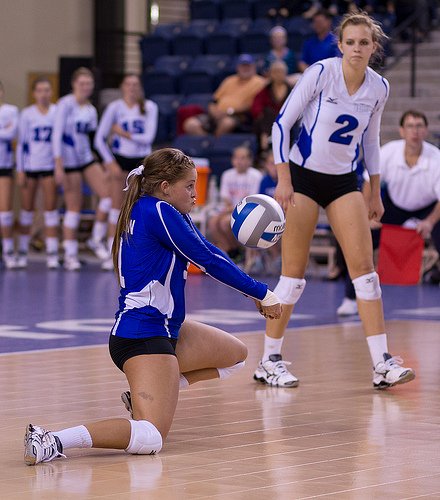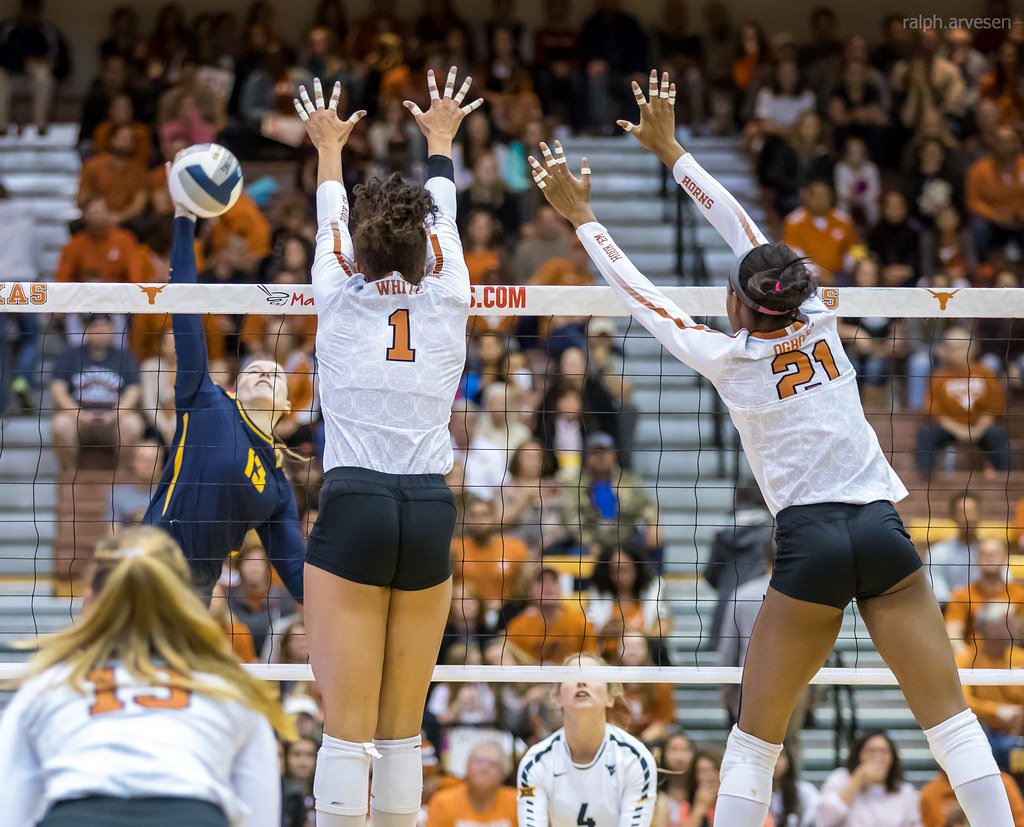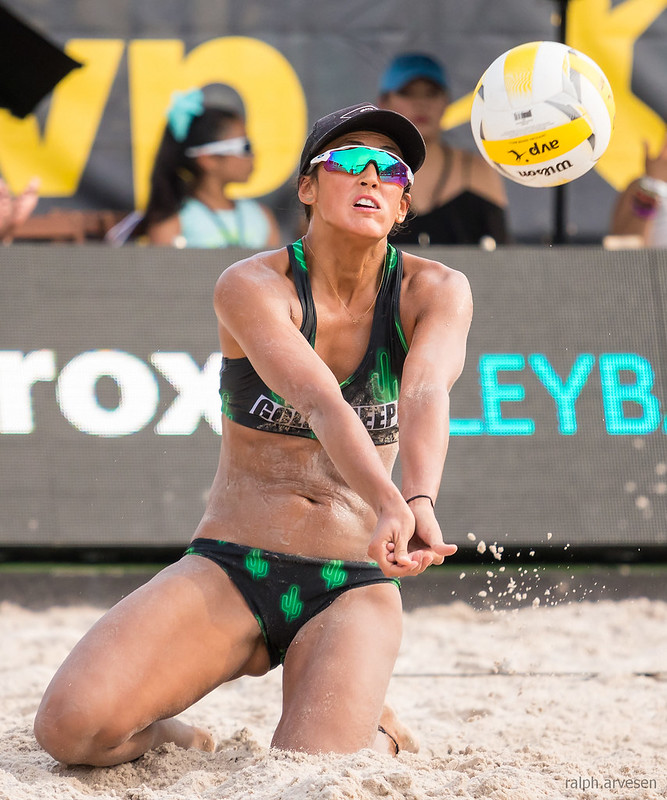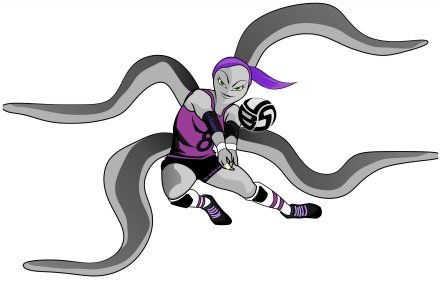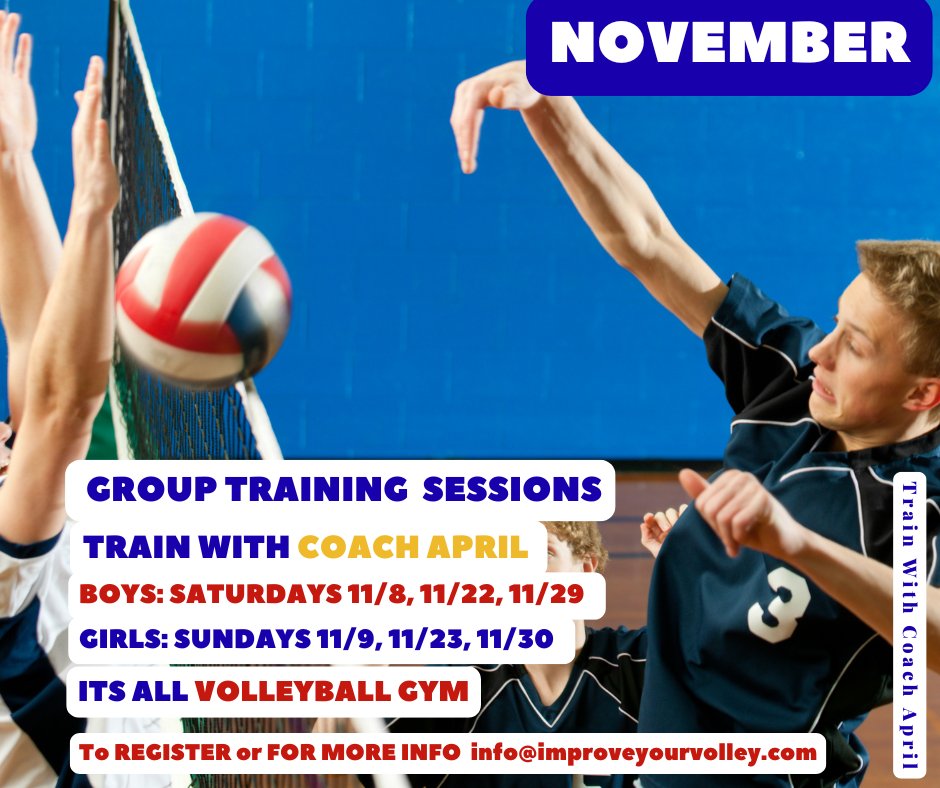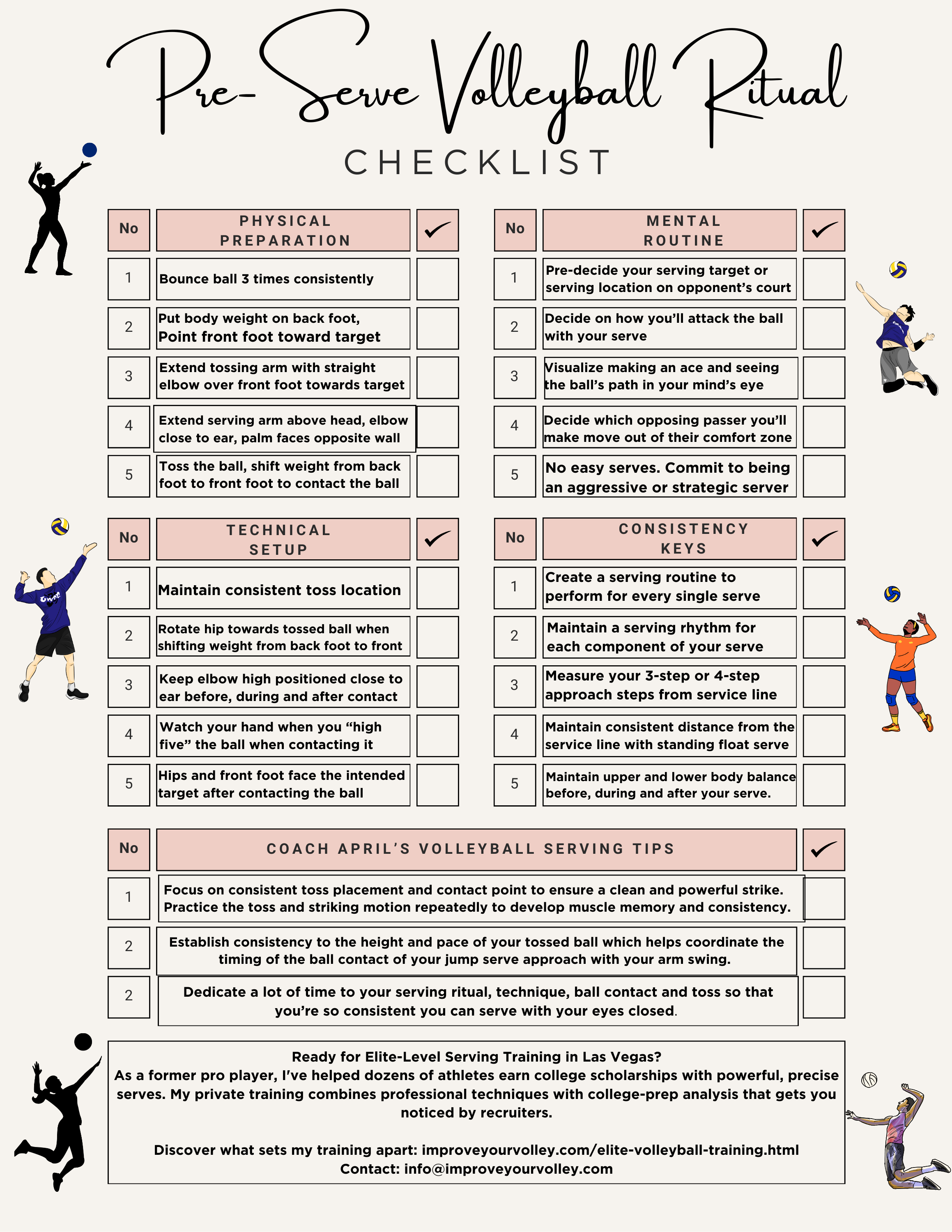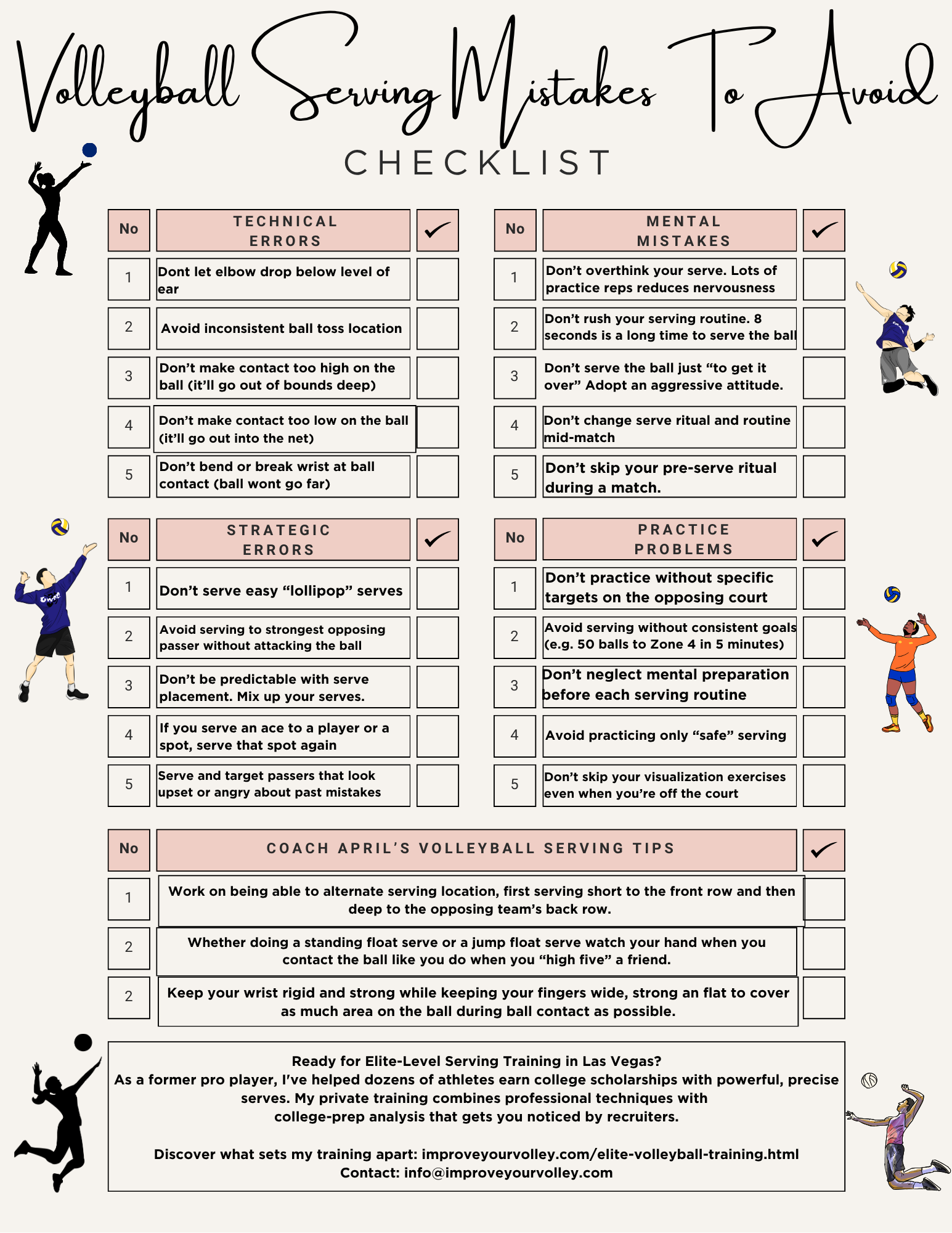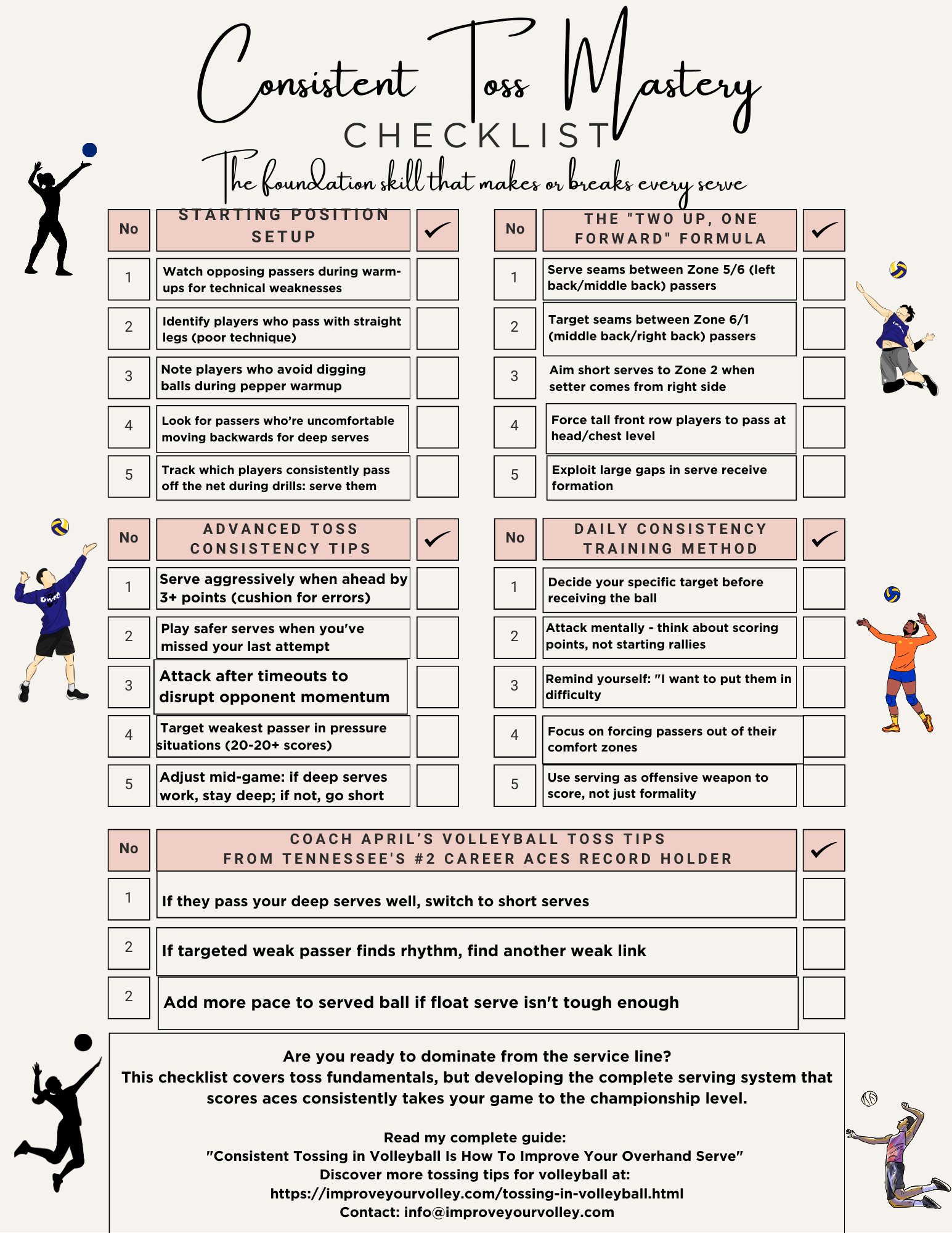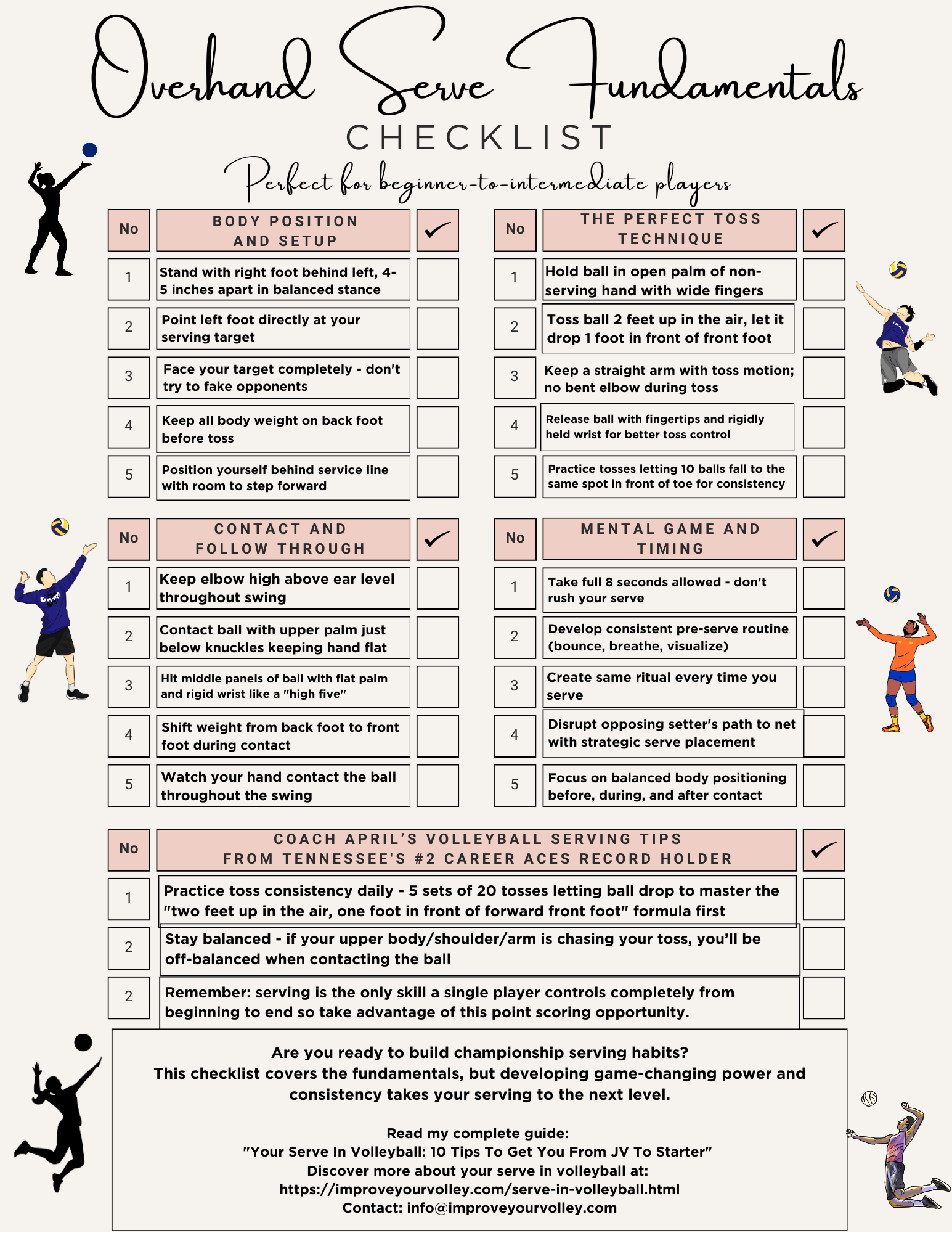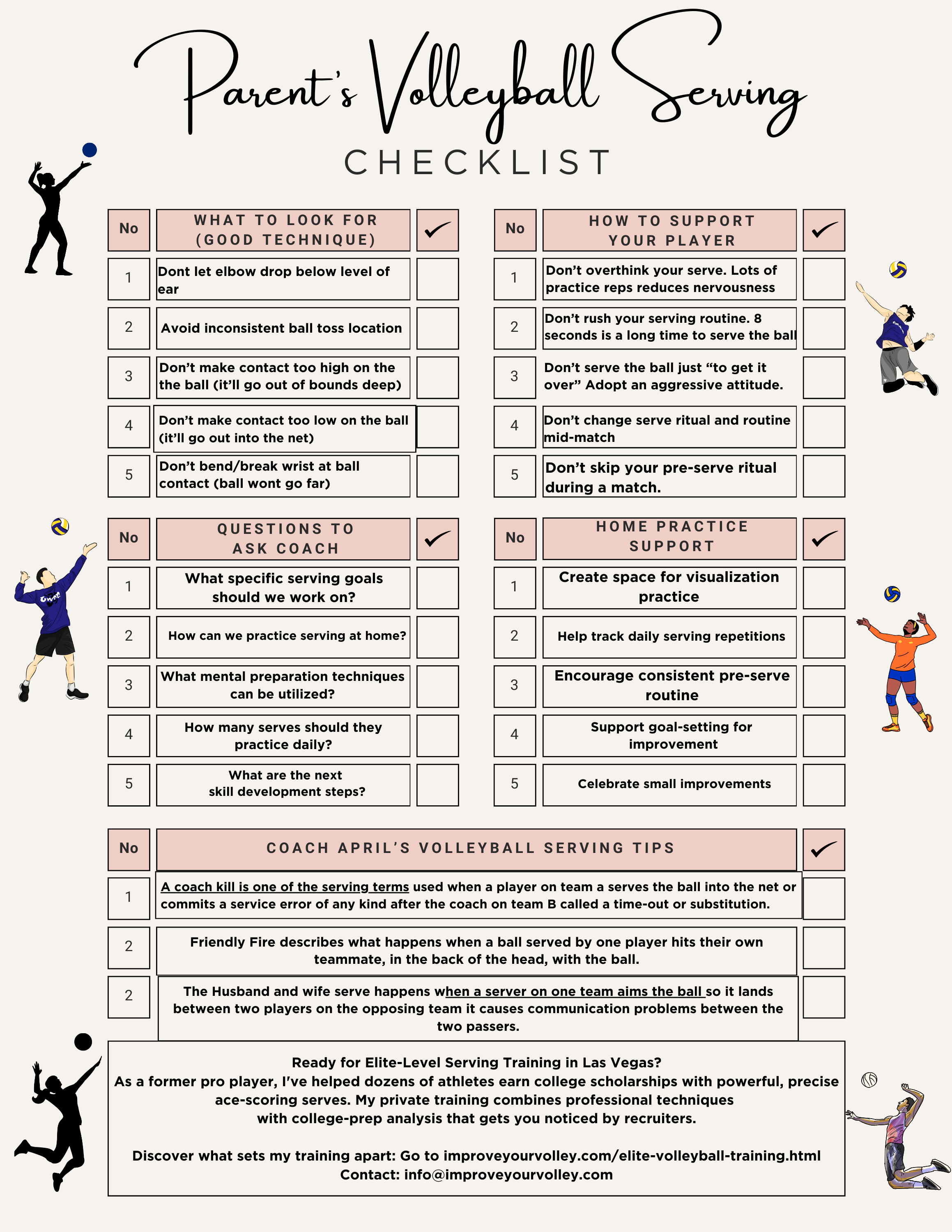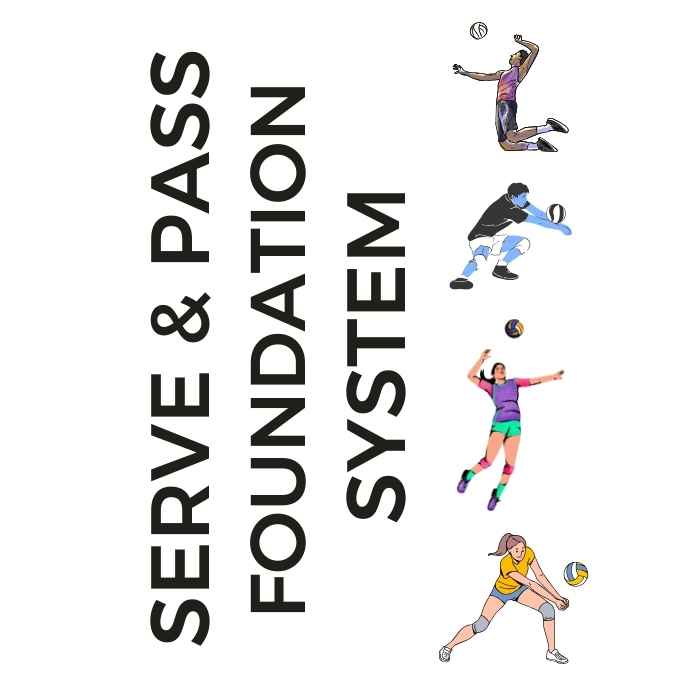
Serve + Pass Foundation System: The Complete Skills Arsenal The two-skill mastery system that transforms inconsistent players into the athletes coaches build their lineups around. Stop Struggling With The Two Most Important Skills In Volleyball!
- Improve Your Volleyball with Coach April
- Volleyball Tips on Playing Better and Improving Your Basic Skills
- Digs in Volleyball: Fundamental Techniques for Successful Defense
Digs in Volleyball: Fundamental Techniques for Successful Defense
This guide is designed to help players learn how to use their forearms to create a strong platform that deflects an attack and improves your digs in volleyball.
Welcome to my article dedicated to mastering the art of improving your digs in volleyball.
In this "how to" digging volleyball guide, I explain defense techniques and strategies to enhance your digging skills, with a focus on utilizing your forearms to keep attack hits off the floor.
Whether you're a beginner looking to learn the fundamentals or an experienced player aiming to improve your technique, my guide will provide valuable insights to help you excel in digging.
Tips For Better Digs In Volleyball: Use Forearms To Keep Attack Hits Off The Floor
How To Dig in Volleyball
When contacting the ball, do not swing your arms to meet the ball. The attack hit is hard enough and you don't need to add additional movement to get the ball up
This defensive skill requires proper technique, knowing how to be in the right spot at the right time and quick reflexes to react swiftly to the opposing team's attacks.
The action of digging a ball is modeled after shoveling or digging something out of the ground with a shovel.
So in other words let me ask you again.
What is the definition of a dig in volleyball?
The dig is a digging volleyball skill
- used by a player in defense to
- keep the ball off the team's court floor
- using their forearms to deflect the ball back in the air
once it has been attacked by an opposing team's hitter into your court.
How to Dig in Volleyball: Step-by-Step Guide
To understand the technique of digging in volleyball, let's break it down into several key steps:
1. Proper Body Positioning and Footwork
How to Dig in Volleyball:
To dig a volleyball up in defense you keep an attacked ball by the opposing team off your court floor by extending your arms and hands under the ball to deflect it back in the air before it hits the floor.
Begin by positioning yourself with a low and balanced stance, slightly bending your knees.
Be light on your feet, ready to move in any direction.
2. Hand Placement
Utilize the forearm pass, also known as the bump, as the standard technique for a dig.
Clasp your hands together, creating a flat surface with your forearms. This forms the platform to absorb the impact of the ball and direct it back into the air.
3. Reacting to the Attack: BSBH
When the opposing team is in serve receive,
- BALL
- SETTER
-then watch the setter's movements to see how they can get to the ball, if its easily or if they have to move to chase the ball down after a bad pass and that will tell you if the setter can set all their hitters or if they can only set one or two of their hitters
- BALL
-then train your eyes quickly back to the ball's trajectory out of the setter's hands to see if its a high ball outside or delivered low, fast and quick to the middle or to the opposite hitter behind them so you can adjust your feet quickly to get to your adjusted position outside the shadow of your blockers where you can see the hitter's arm when it hits the ball
- HITTER
-Now finally train your eyes on the player's hitting arm as they contact the ball to see if they're going to direct the ball to your side of the court where your platformed arms and hands are quickly placed together to deflect the ball back into the air in order to keep it off the floor
Lowering Your Hips and
Proper Ball Contact:
Before executing the dig, lower your hips to a level below the incoming ball, enabling better control and upward deflection.
As the ball approaches, focus your attention on the contact point of the ball, aiming to stay low while playing the ball and directing it upward toward the middle of your court.
Learn to “drop” your hips faster in defense! Many Vegas players in defense stand too high. You need to get comfortable with dropping low to the floor...fast while keeping your shoulders in front of your knees!
You have to drop your hips fast below the level of the oncoming hard hit in order to get the ball up.
Semiprivate training with Coach April.
Frequently Asked Questions About Improving Digs In Volleyball
Digging Volleyball Skills
Why do you dig in volleyball?
By digging a ball, a player is keeping it from
- hitting the ground so the opposing team scores
- creates an opportunity for your team to counterattack and run an offense in an attempt to score during a rally
Forearm Digging and Hitting As a Pepper Drill Variation
A Digs In Volleyball Tutorial
Where's Your Volleyball Ready Position To Dig A Ball?
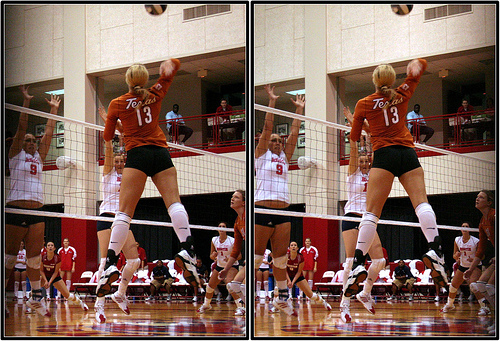 A Digging Volleyball Tutorial: To dig a volleyball, its your job to place yourself in the path of the oncoming ball that's been hit by an opposing team's hitter.
A Digging Volleyball Tutorial: To dig a volleyball, its your job to place yourself in the path of the oncoming ball that's been hit by an opposing team's hitter.To dig the volleyball you need to know where to stand in the court.
You can't dig what you can't see.
So, you need to place yourself in a ready position in volleyball where you can watch the opposing hitter hit the ball into your court.
To dig a volleyball, its your job to place yourself in the path of the oncoming ball that's been hit by an opposing team's hitter.
In order to do that (depending on the defense your team is running) you need to stand outside of the block where you can see the hitter hit the ball.
That means you need to be standing outside of the shadow of your blockers but in the path of the oncoming ball.
Digging volleyball attack hits how does it work?
At the same time, you present your platform in front of you, you block the path of the ball so it contacts your forearms and is deflected up in the air towards the middle of your court close to your team's ten foot line.
Digs In Volleyball Tutorial
How can you dig better in volleyball?
Lower your hips before you dig
Just before you dig a ball, you lower your hips so they are below the level of the oncoming ball.
When your hips are lower than the ball when you dig the ball ...it will go up in the air.
If your hips are too high then you have less control of the ball and the ball will shoot straight out instead of up in the air.
Do You Follow Me on Pinterest?
Follow me on Pinterest Volleybragswag to improve your game even faster!
I share alot of individual, partner and easy-to-do volleyball serving drills we do in class with my followers.
Many of these volleyball practice drills you can do at home by yourself or try at your next practice with your teammates.
If you're a B team or JV player trying to make varsity next year...your goal should be to complete 1000 reps a day of at least three of the basic skills on your own...volleyball passing, serving and setting should be at the top of the list.
Digs In Volleyball
Where Do You Go Now?
Okay here's where you need to go now! There are three options:
- Learn more Digging Volleyball Tips and Defense by clicking the Related Links below. .
- Follow the suggested reading on our Sitemap page Learning How To Play (Sitemap)
- Or visit the pages in the How to Play Volleyball section in the drop down menu at the top of the page to get started.
- Before leaving this page Say "Hi" to Miss O.I Gotchu the Octopus wearing the #8 jersey below. Miss O.I. is the libero for the All Beast VolleyBragSwag All Star team.
If your athlete struggles with consistent serve receive, gets subbed out, or is overlooked for playing time—this is the fix you’ve been looking for.

Struggling with passing consistency?
I help talented passers tired of getting pulled from games because of inconsistent serve receive skills BUILD passing confidence without expensive private lessons using the same 3-step system that's helped dozens of my athletes get recruited.
Download my eBook for $17.99 and start building the passing confidence that keeps you on the court—and gets you seen by college coaches.
From Lady Vol to Legend: Coach April Produces Powerful Passionate Players...is that you?
What Are You Looking For?
Click to Download Your Pre Serving Ritual Mastery Checklist pdf:
🎯Volleyball Pre Serving Ritual Guide -
Players! Learn How To Transform Your Serve from Weak to Weapon
Click to Download Your Parent's Volleyball Serving Checklist pdf
🎯Parent's Volleyball Serving Checklist Guide
Parents! Help Your Player Develop Championship Serves (Even If You've Never Played)

Hi there!
Thanks for stopping by. Hope you learned something today that will help you reach your volleyball goals.
Be sure to subscribe to my email newsletter so you can learn more each week!
Stay strong! Stay motivated!
-Coach April

SUSCRIBE to my email newsletter below!
 Click to learn more about the weekly volleyball classes and clinics or email info@imrpoveyourvolley.com for information
Click to learn more about the weekly volleyball classes and clinics or email info@imrpoveyourvolley.com for informationCongratulations to my seven Boys-18s Vegas Volley club players who played in two state championship finals yesterday, the 3A and 5A State champinship finals at Sunrise Mountain High School.
TOURNAMENT CHAMPIONS!
A-1 Vegas Volley VBC
In It To Win It Tournament
May 2 - 4, 2025 Tournament
Gold Medalists
18s Premier Division
Vegas Volleyball's Unsung Heroes: Celebrating Moms with Peace Love Volleyball Shirts
Ready to energize your volleyball mom journey?
Subscribe to my 'Producing Powerful Passionate Peaceful Players' email list above on ImproveYourVolley.com.
You'll receive energy-boosting tips, exclusive insights from me, Coach April Chapple on maintaining momentum in volleyball.
Let's power up the Vegas volleyball scene together!
Recent Articles
-
Complete Serving System: 9 Volleyball Serving Checklists
Dec 28, 25 03:58 AM
The complete serving checklists bundle contains 9 checklists so you master overhand serves, jump floats, serving tactics and ace scoring with at-home drills. -
12 Drills To Improve Volleyball Skills:Complete Practice Drill Library
Dec 28, 25 03:46 AM
Master these 12+ proven drills to improve volleyball skills with step-by-step instructions for passing, setting, serving, hitting, blocking and defense. -
Workouts To Improve Volleyball Skills: 4-Week Training Plan & Tracker
Dec 26, 25 10:04 PM
Get complete structured 4-week workouts to improve volleyball skills with daily training schedules, self-assessment checklists, and progress tracking.
